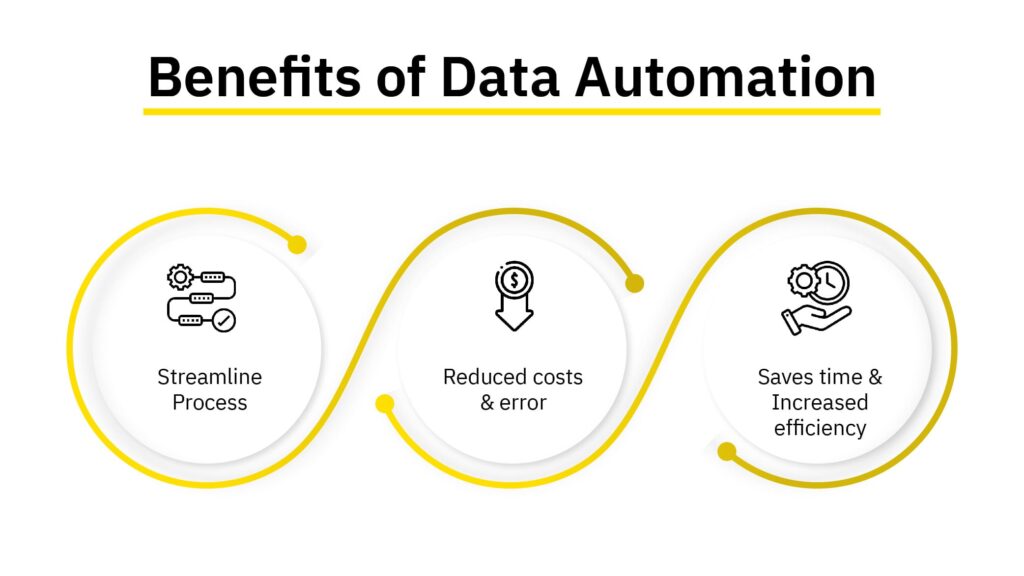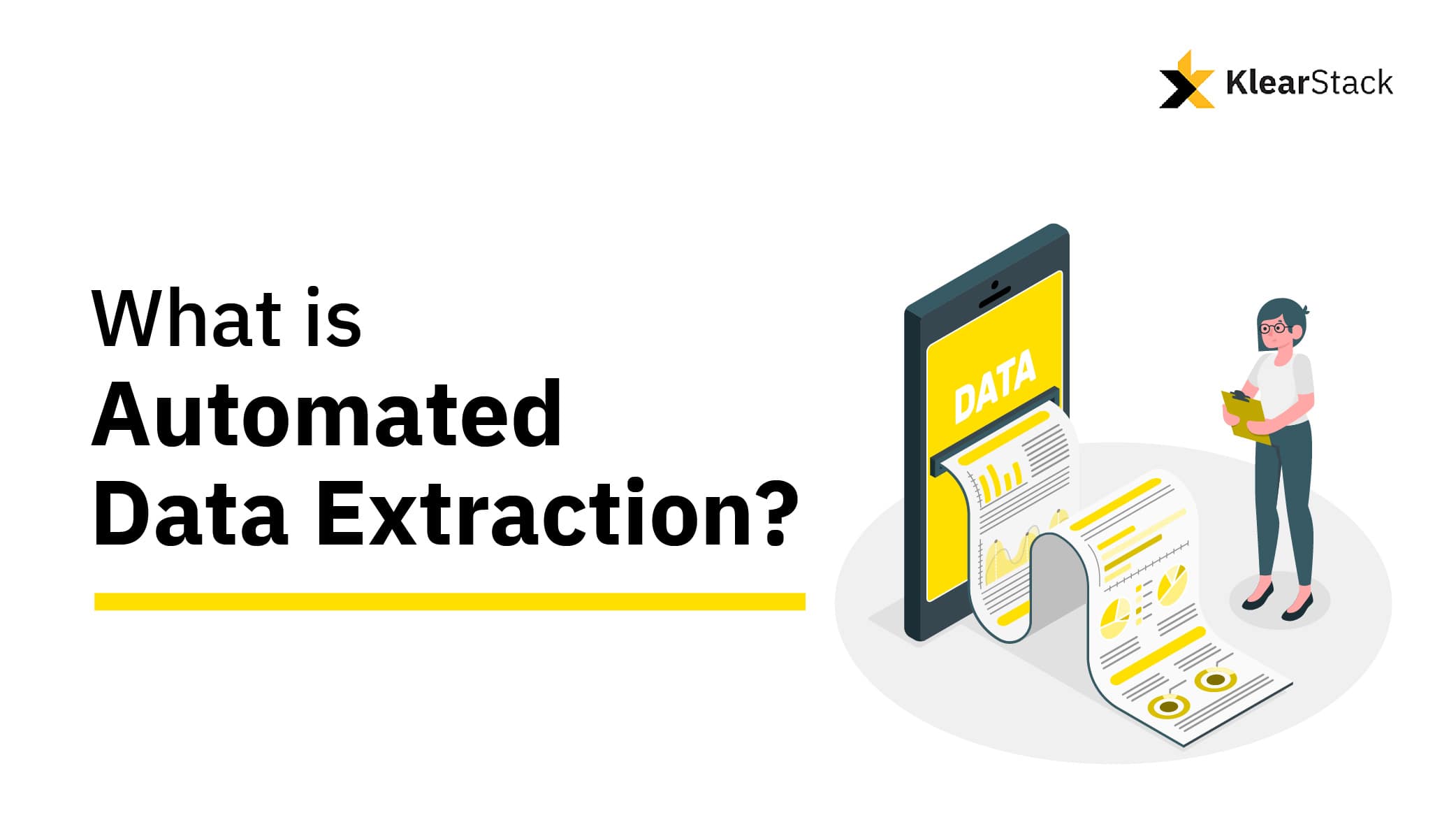Data extraction is a process for extracting valuable and specified information from larger unrefined data sources such as documents, Google Drive, Gmail, AWS S3 Bucket, SFTP (Secure File Transfer Protocol), and APIs. Data extraction can be from unstructured, semi-structured, and/or structured data sources. With manual intervention, data extraction can be tedious and time-consuming. However, automated data extraction eases the task and converts data into a suitable form for analysis.
In this blog, we will discuss everything you need to know about automated data extraction processes. But before that, let’s first briefly understand what data extraction and automated data extraction are.
What is Data Extraction?
Data extraction is defined as a transformative process that consolidates and refines data in a structured format from an unstructured or semi-structured database. Data extraction can be done manually or by using tools along with human interaction. It is an initial step in ETL (extract, transform and load) as well as ELT (extract, load, transform), which helps in storing crucial information at a centralized location.
Automated data extraction is an advanced method for extracting data from large databases.
Also Read: Top 10 Data Extraction Tools
What is Automated Data Extraction?
Automated data extraction is extracting data using intelligent technologies such as artificial intelligence, machine learning, natural language processing, optical character recognition, etc, to extract relevant and specific information and transform it into structured data for further analysis and processing. The automated data extraction process reduces human intervention, the costs of the data extraction process, and human errors. The systems automatically recognise data, identify its nature, and extract key-value pairs and tables from the document, website, emails, APIs and others.
Data extraction is a crucial part of intelligent document processing that involves extracting and transforming data into digital format.
Benefits of Automation of Data Extraction Process

1. Cost Savings
Manual data extraction requires you to hire various individuals, buy proper systems, and make other crucial investments for the purpose. In the long run, the investment can be expensive. Automated data extraction is scalable and cost-efficient.
2. Reduce Errors
Artificial intelligence learns and upgrades its knowledge and provides an error-free data extraction process. By automating the data extraction procedure, the structured data obtained will contain fewer errors, resulting in more accurate business reports. Data extraction automation process with tools like KlearStack offers 99% accuracy.
3. Efficient Process
Manual data entry is time-consuming and more prone to errors. Sometimes, the process can extend to the length, resulting in delays in work. Auto-data extraction saves time by not requiring the data to be entered manually but by automating it with the tool. The automation process helps in extracting data quickly. For instance, the data extraction solution Klearstack boosts the 500% operational efficiency of an organization by automating the process.

Use Cases of Automated Data Extraction
Multiple companies or organizations are involved in complex data extraction to import data from files, credentials, and photos into their systems. Automated data extraction helps such companies and boost their efficiency. Let’s have a look at different uses of automated data extraction in companies/industries.
1. Data Extraction for Accounts Payable
From retailers to big enterprise companies, generate invoices, receipts, purchase orders, etc. The automated data extraction tool extracts validates, and integrates the information effortlessly and streamlines the accounts payable process.
Advantages of Automation in Accounts Payable
- Avoid the delay in bill payment
- Minimize errors
2. Document Processing in Supply Chain
Logistics service providers manually feed updates to the TMS (transportation management system) or ERP (enterprise resource planning) by extracting and analyzing large amounts of data from bills of lading, invoices, and other documents. Commodity merchants, food producers, shippers, and logistics companies must process hundreds of Bills of Lading every day. Manual methods can be time-consuming and with human errors.
Advantages of Data Extraction Automation in Supply Chain
- Automated data extraction helps in the processes of the Bills of lading and other associated logistics papers in real-time by ensuring the accuracy of over 99%.
- In the supply chain, various traditional retailers or raw material suppliers use handwritten bills. Automated data extraction tools process them as well.
3. Automation of Data Extraction for Consumer Loans
Consumer loans required to process various documents result in lots of time consumption in categorizing, extracting and processing them. Automation of data extraction for consumer loans, automatically process the document without any errors and delay.The data automation for consumer loans include vehicle invoice processing, property appraisal receipts, down payment receipts etc.
Advantages of Automation in Consumer Loan
- Eliminates the manual loan processing
- The automated tool streamlines loan approvals and reduces huge costs.
4. Automation of Data Extraction in ID Card Verification
The ID card verification process demands high accuracy, and security. Powerful data extraction solutions like Klearstack, AI driven approach helps the organizations to ensure high accuracy, security and efficiency in ID card verification and processing. This verification may include numbers of id card types like passport, driving license, ID card, pan card, etc.
Advantages of Automation in ID Card Verification
- Automation in ID verification provides real-time results and helps achieve the goal efficiently.
- The automation process eliminates errors and frauds to make the process secure and accurate.
Types of Data to Automate for Extraction
1. Structured Data
Structured data refers to data that is in a standardized format, usually in rows and columns. The standardized data is easily accessible and can be efficiently processed.
Examples:
- Excel files
- SQL databases.
- Point-of-sale data
- Web form results
- Product directories
2. Unstructured Data
Unstructured data is information that includes data such as dates, numbers, and facts, along with heavy text. Extracting data from such documents is challenging. However, AI-empowered automated data extraction processes extract the data efficiently.
Examples:
- Business Documents
- Legal documents
- Customer Feedback
- Webpages,Images, Audio, and Video
- Open Ended Survey Responses
3. Semistructured Data
Semistructured data is neither completely structured nor unstructured. Typically, it includes some heavy text along with some data models. Organizing semistructured data is not as complicated as unstructured.
Examples of unstructured data
- NoSQL Databases
- CSV, XML, and JSON
- RDF
- Electronic data interchange (EDI)

Technology Used in Automated Data Extraction
1. Optical Character Recognition (OCR)
OCR technology is a key component of data extraction automation. It allows the software to recognize and extract text from images, scanned documents, or PDF files. OCR algorithms convert the scanned or image-based text into machine-readable characters, enabling the extraction of data from unstructured sources.
2. Natural Language Processing (NLP)
NLP technology enables the software to understand and interpret human language, including textual data. It helps extract and categorize relevant information from unstructured text documents by analyzing grammar, syntax, and context. NLP techniques are particularly useful for data extraction from sources like emails, customer feedback, or social media posts.
3. Machine Learning (ML)
Machine learning algorithms play a crucial role in data extraction automation. ML models are trained on large datasets to learn patterns, rules, and relationships within the data. These models can then be used to automatically extract and classify data from new and unseen documents. ML algorithms can adapt and improve over time as they process more data, leading to enhanced extraction accuracy.
4. Artificial Intelligence (AI)
AI encompasses a broader range of technologies, including machine learning and NLP, that enable software systems to perform intelligent tasks and mimic human intelligence. AI-powered data extraction automation solutions can understand unstructured data, learn from experience, make decisions, and improve performance over time. AI enables more sophisticated and context-aware data extraction, improving accuracy and efficiency.
5. Robotic Process Automation (RPA)
RPA technology automates repetitive tasks by mimicking human actions on computer systems. In data extraction automation, RPA can be used to automate the manual steps involved in data extraction, such as opening documents, navigating through applications, and copying/pasting data. RPA enhances the efficiency of the overall data extraction process by eliminating manual effort.
How to Automate Data Extraction Process with Pioneer AI -driven Solution Klearstack?
Automating the process of data extraction is necessary for organizations as it helps bring significant results by reducing cost, saving time, and increasing efficiency. Klearstack is an AI-powered automated data extraction solution through which you can process unstructured, structured, and semistructured data effortlessly.
To start with Klearstack, you just need to schedule the solution’s personalized demo, share your requirements, and learn the automation process. In the demo, the data automation expert will guide you through a step-by-step process to automate data extraction.
FAQs Related to Automated Data Extraction
Automated data extraction is the process to extract information from semi structured or unstructured data through AI-driven automated solutions.
The key advantages of automated data extraction are:
1. Streamline process of data extraction
2. Reduced costs and error
3. Saves time and increased efficiency






